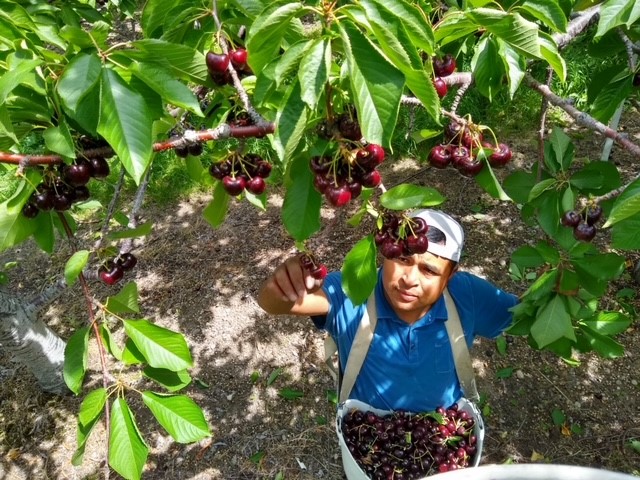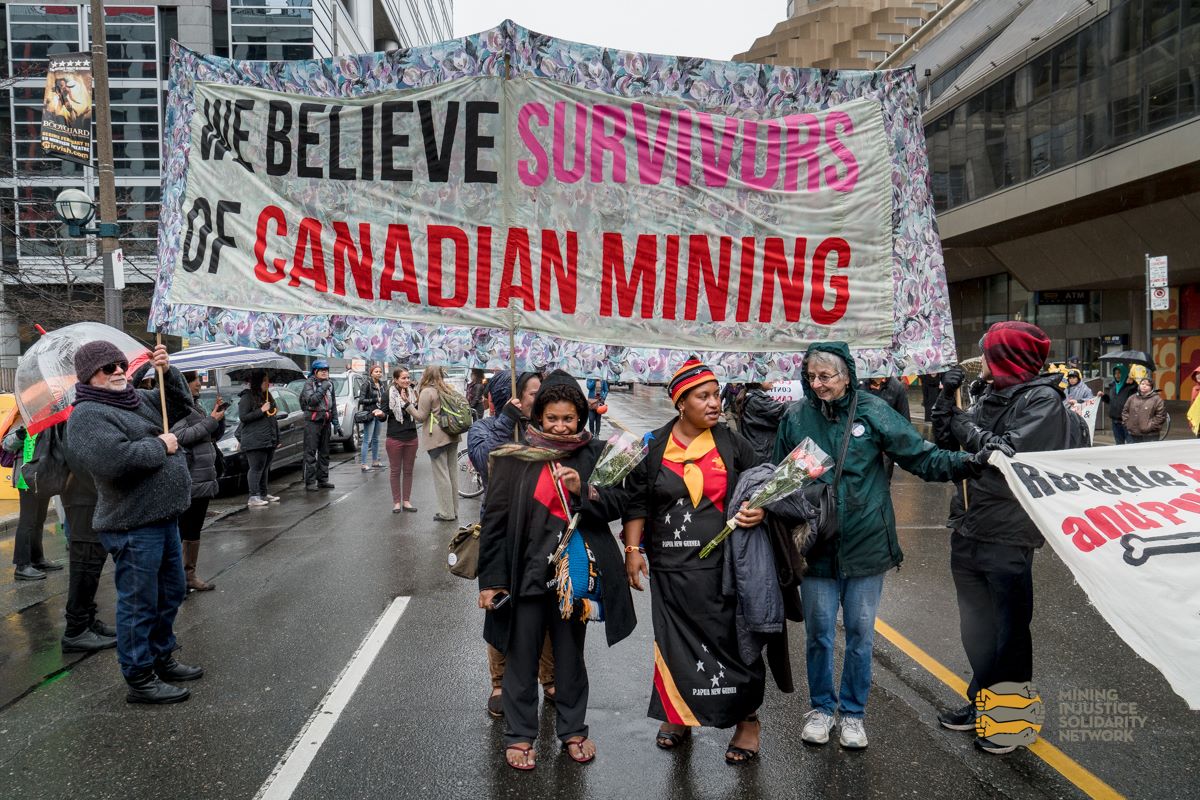Leonel Nava, from Tlaxcala, Mexico, came to Canada as a temporary worker after the birth of his second child, and is currently on a farm in British Columbia. He describes long, grueling work days — “they mistreat you, they shout at you, often they insult you.”
Back in Mexico, Neva’s job on a chicken farm did not allow him to adequately support his growing family. He landed in B.C. 2014, “knowing no English, nothing about field work, and having never left Mexico before.”
While the work allows him to provide for his children, his experiences are seldom positive. Conditions vary from farm to farm, but, according to Nava, most workers report long working hours, often six or seven days a week, mistreatment, and low-quality lodging are the standard. And because of the power imbalances inherent to the relationship between workers and farmers, few workers dare complain.
“You leave everything you know behind to be exploited,” says Nava.
And Nava’s experience echoes what a UN representative heard during a recent 14-day visit to Canada. He says that thousands of temporary workers in Canada are subjected to “contemporary forms of slavery.”

UN Special Rapporteur Tomoya Obokata says temporary foreign agricultural workers, because of the limitation of their visas, are amongst the most vulnerable to the phenomenon.
“I am deeply disturbed by the accounts of exploitation and abuse shared with me by migrant workers,” he says in a statement, adding that many migrant workers face “contemporary forms of slavery, as they cannot report abuses without fear of deportation.”
His comments, however, did not come as news to the workers or the organizations that support them — voices that have been sounding the alarm about the dehumanizing treatment of migrant workers for years.
The report is one “in a long line of hundreds and hundreds of statements and positions and calls and even promises,” but nothing ever changes, says Syed Hussan, Executive Director of the Migrant Workers Alliance for Change, a member-led organization of migrant farmworkers, care workers, and students.
A failure of the immigration system
Nava is one of the 70,000 plus seasonal workers who come to Canada every spring to work in the agricultural fields, and head home again before winter (exact numbers are hard to come by, as there are various overlapping immigration programs and an uncounted number of illegal workers).
Canada, which has been facing a shortage of local field workers for the past 70 years, supports them with legal immigration pathways, but no access to permanent residency.
The agricultural sector accounts for 7 per cent of Canada’s GDP (or $143.8 billion) and makes the country the fifth-largest exporter of agri-food and seafood in the world. Migrant workers make up 15 per cent of Canada’s agricultural workforce.
The reality for workers, as Obokata observed during his visit, is far from ideal. On some farms, workers are reported to work as much as 17 hours a day, six or seven days a week.
“‘Migrant worker’ is actually a political category,” says Hussan, explaining that it can be used to refer to various immigrants’ categories, from temporary workers in the agricultural and care sectors to refugees, even travelers with work-holiday visas. Usually, it is used in reference to “anybody without permanent residence status who’s a worker,” he says.
When it comes to seasonal agricultural workers, most hail from Mexico, Guatemala, Honduras or the Caribbean. Like Nava, many come here because they cannot find work opportunities in their home country. Indeed, Hussan observes that “this workforce is effectively only Black and brown bodies who are coming here to work for the profit of the richest few.”
Going back throughout colonization, Canada has a long history of exploiting the labour of racialized immigrants.
After the Second World War, the U.S. introduced a scheme to allow low-wage Mexican workers to be employed by farmers. The Canadian agricultural sector lobbied for a similar scheme, claiming that the sector was in danger due to low-cost competition. In 1966, the government obliged, allowing workers from Jamaica, and later other countries throughout the Global South, to come to Canada to work during summer.

Right now, Canada offers agricultural workers two immigration pathways. The Seasonal Agricultural Worker Program (SAWP) allows workers from Mexico and selected Caribbean countries to come for up to eight months per year, while people from other countries can come through the Temporary Foreign Workers Program (TFWP).
In both cases, workers are invited to Canada by a local employer, after the latter has demonstrated that qualified Canadians are not available, for a predetermined period of time, after which they need to go back to their country. They are usually invited year after year, sometimes for up to decades, but neither case allows workers to bring their families, or aspire to a more permanent immigration status.
According to Michel Pilon, Executive Director of the migrant rights organisation Réseau d’aide aux travailleuses et travailleurs migrants agricoles du Québec (Support Network for Agricultural Migrant Workers in Quebec, RATTMAQ), “the problem with these programs is the closed permit.”
Closed work permits mean that workers “cannot change employers and may face deportation upon termination of their employment,” states Obokata in his report. He went on to add that “this creates a dependency relationship between employers and employees, making the latter vulnerable to exploitation and abuse.”
Additional factors contribute to making the situation worse for workers. First, programs like the SAWP are exempt from labour standards, such as employment insurance, minimum wage protections, and overtime pay, while workers are often unaware of what rights they have. As a result, Obokata states that workers often face “excessive working hours, being obliged to perform extra-contractual tasks, physically dangerous tasks, low wages, no overtime pay, being denied access to healthcare and/or transport to medical facilities, limited access to social services.”
What’s more, workers are often required (either by their work permit or because of the remoteness of the farms) to live in accommodation provided by the employer, “sometimes warehoused one on top of each other, potentially without clean drinking water,” says Hussan.
At the B.C. farm he is currently working on, Nava says, the “housing is unacceptable and there are plagues of rats.” Workers try to “look for places that are not too bad,” but most have little hope of finding a farm where conditions are actually considered good.
Service Canada and Immigration Canada did not respond to Ricochet’s requests for an interview.
Denis Roy, Treasurer and Director of Finances at the Quebec Union des producteurs agricoles (UPA – Union of Agricultural Producers), says that the UPA encourages workers to affirm themselves and set their boundaries, while ensuring that farmers are aware of and respect the workers’ rights. “Our goal”, he says, “is that the program of temporary workers is win-win-win, for the workers, their families and the farmers.”
When asked about the long days that workers are subjected to, or the extensive housing issues, Roy says that workers come to Canada to make money and, according to farmers, often prefer to work longer and save on housing to earn more. And if they didn’t, he adds, they could refuse with no consequence.
But the reality is more grim, explains Nava. When someone speaks up, “they are labelled as problematic,” and they risk facing repercussions, both in the short or long-term. For example, once Nava complained on social media about the employer-provided accommodation he was living in at the time and, as a result, his employer tried to take his phone and close his Facebook account to prevent him from talking (Nava knew his rights and refused to comply).
Workers who stand up for their rights are also at risk of being fired and, since their work permit is tied to their job and they live on the farm, this means that they end up both homeless and undocumented, with no possibility of getting another job.

This situation is compounded by the debt that migrants may take on to come to Canada: recruiters in their home countries often require upfront payment to connect a worker with a farm, forcing them to take a loan. This practice makes it even harder for workers to quit abusive employers, because they would have little chance to repay the loan, which is “equivalent to one or two years of salary in local currency,” says Hussan.
And then there is the infamous practice of blacklisting, where employers share the names of “problematic” workers with other farms and liaison services in their home countries, effectively preventing the person from coming back to Canada. “While all the governments consistently denies it is happening, workers who speak up for their rights are not invited back the next year,” explains Hussan.
As a result, Obokata concluded that “certain categories of migrant workers are made vulnerable to contemporary forms of slavery in Canada by the policies that regulate their immigration status, employment, and housing.”
Few options to defend themselves
Last September, Canada amended the Immigration and Refugee Protection Regulations (Temporary Foreign Workers) to introduce new protections for workers and prevent abuse, requiring, for example, that employers inform workers of their rights, as well as mandating inspections (usually pre-scheduled) of work sites.
These measures, says Nava, provide “relief, but a very light one,” observing that there is no economic incentive for the government to change things. And, as Obokata notes in his report, the rules are very seldomly enforced, and most workers are unaware they even exist.
Organisations like RATTMAQ and the Migrant Workers Alliance for Change are trying to change the status quo, supporting and organizing workers who are standing up for their rights. For example, Pilon says that RATTMAQ wins 95 per cent of the lawsuits against employers brought forward by workers.
However, he adds, “few workers file complaints, […] even if their employers break the law.” The main reason is that workers fear being blacklisted and not being called back the following years, losing, for many, their only source of income.

In addition, Nava observes that language is a big barrier, as “the large majority of workers do not speak any English.” Indeed, temporary agricultural workers are not offered language courses as other classes of immigrants in Canada, who are usually required to take French or English classes. And while nonprofits supporting workers are always careful to provide services in Spanish, the same cannot be said of employers and government resources.
Finally, they know “they won’t be listened to,” says Nava, describing how often individual complaints, addressed to either the Mexican Consulate or Service Canada, are not addressed.
And yet Nava believes strongly in speaking up, not just for himself, “but for the thousands of migrant workers who share the same situation” as him, and invites other workers to stand up for themselves and organize in groups, like the Migrant Workers Alliance for Change.
All he wants, he says, is respect. “I am generating revenues for the employer, it is not like they are giving me free money, so I think I should be treated as an equal.”
Calls for permanent status
All stakeholders involved agree that to change things, there will need to be drastic changes to the system.
In his feedback, Obokata called on the federal government to step up its efforts to safeguard workers’ rights and offer a clear pathway to permanent residency for all migrants. “I urge the government to bring forward legislation requiring Canadian companies to implement mandatory human rights due diligence, and expand the independence, powers, and mandate of the CORE (Canadian Ombudsperson for Responsible Enterprise).”
The RATTMAQ is working closely with various stakeholders in Québec, including UPA and several government officials, to improve conditions for workers in the region. Quebec, he notes, is quite open compared to other provinces, explaining that “it may sound surprising, but the UPA agrees with the idea of sectoral open work permits.”
Sectoral permits would tie the workers to the agricultural sector, to avoid labour shortages: “we have the mission of feeding the population,” says Roy, “and we cannot stop the production of a field.” But workers would be allowed to change employers if they face exploitative conditions, potentially ensuring better labour standards.

To many, however, this is not enough. According to Hussan, “the only solution is permanent resident status quo. Every person in the country must have the same immigration status, because there’s no other way to have equal rights.”
Unfortunately, years of advocacy on the part of workers, labour associations, and citizens have brought little change. While the government has repeatedly acknowledged the challenges faced by workers and has promised to better protect them, it has not enacted any substantial change.
For instance, a federal pilot program for permanent residency only applies to individuals with permanent contracts. While this presents an opportunity for workers involved in greenhouse agriculture, or animal farming, seasonal field workers are automatically disqualified.
In Quebec, where immigrants must be approved by the province before moving to the federal level, the program does not even apply and any other immigration route requires high proficiency levels in French that most workers do not have, says Roy. RATTMAQ and UPA, together with other organisations, are lobbying at the provincial level to change that, but they have not heard back.
And yet, as Nava says, permanent residency is the only way to end the injustices. “All we ask is the freedom to choose our future.”




